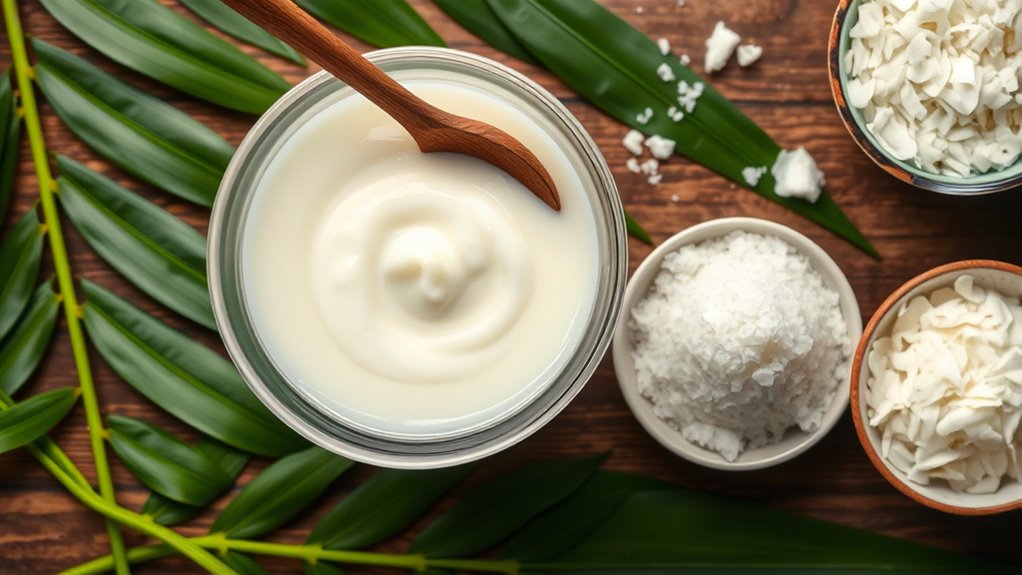You’ll start by gently heating 400 ml of coconut milk with your choice of sweetener and a pinch of salt, stirring constantly to avoid scorching. Gradually whisk in tapioca pearls or rice flour to achieve that smooth, creamy texture. Once thickened, pour into molds and chill for a revitalizing treat. Serve with fresh tropical fruit or a drizzle of toasted coconut for extra flair. Keep going, and you’ll discover tips and benefits to perfect this delightful Asian dessert.
Ingredients and Quantity
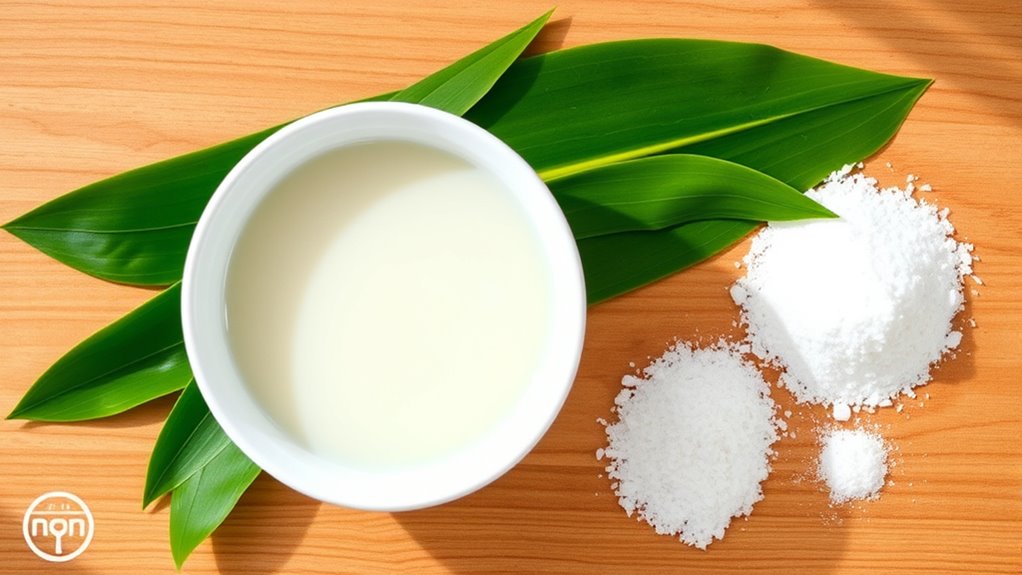
Before you plunge into making this delicious Asian coconut pudding, you’ll want to gather a few simple ingredients that come together to create its rich, creamy texture and subtle sweetness. The star is coconut milk, bringing a luscious, tropical flavor that sets the tone. You can tailor the sweetness to your liking with various sweetener options—whether you prefer natural honey, brown sugar, or a sugar substitute, the choice is yours. Here’s a quick glance at what you’ll need:
| Ingredient | Quantity |
|---|---|
| Coconut milk | 400 ml (1 can) |
| Sweetener options | 3-4 tbsp (to taste) |
| Tapioca pearls | 50 grams |
With these basics in hand, you’re ready to create a dessert that’s both freeing and indulgent.
Preparations
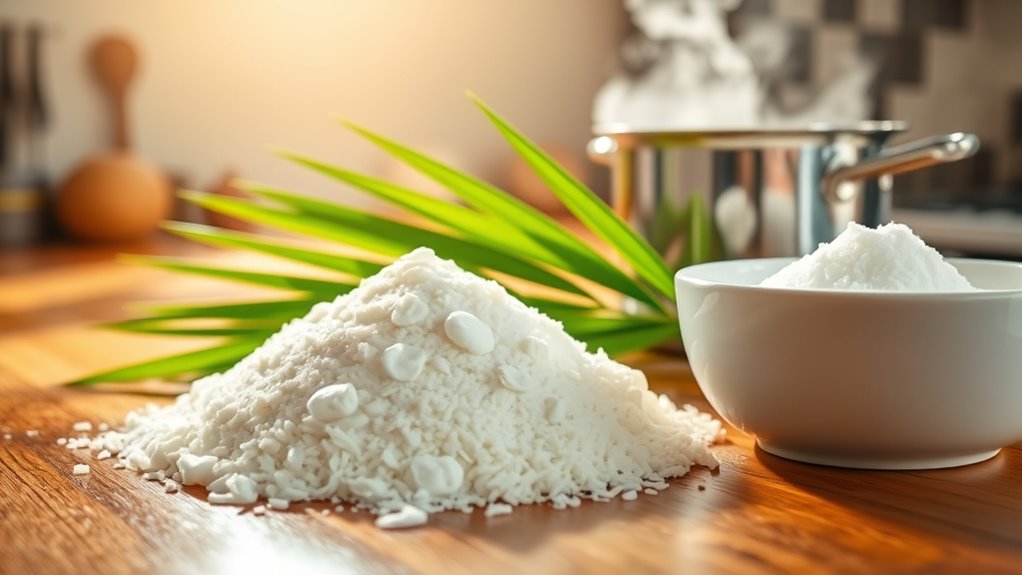
Although the ingredients are simple, getting everything ready properly will guarantee your pudding turns out perfectly creamy and smooth. Start by measuring each component precisely—this helps maintain balance in flavor and texture. Familiarize yourself with essential cooking techniques, like gently heating the coconut milk to avoid curdling. If you’re aiming for a dairy-free option, coconut milk is already ideal, but feel free to substitute with almond or oat milk for a different twist. Preparing your starch or thickener in advance guarantees a lump-free finish. Also, have your sweetener ready—whether sugar or a natural alternative like maple syrup—since timing affects how it dissolves. By organizing your ingredients and understanding these preparation steps, you set yourself free to enjoy the process and savor your luscious Asian coconut pudding without a hitch.
How to Cook
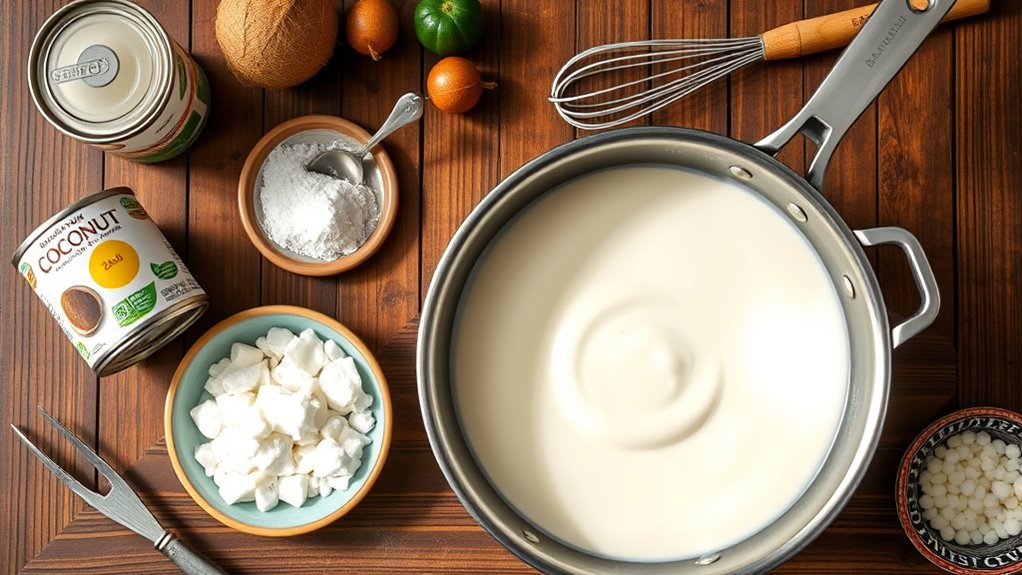
- Prepare your ingredients and have them ready.
- Combine coconut milk, sugar, and a pinch of salt in a saucepan over medium heat.
- Stir gently to prevent scorching and ensure a smooth texture.
- Gradually add tapioca pearls or rice flour while whisking constantly to avoid lumps.
- Continue stirring until the pudding thickens and coats the back of a spoon.
- Optionally, add a splash of vanilla extract or a touch of pandan essence for enhanced flavor.
- Remove the saucepan from heat once thickened.
- Let the pudding cool slightly before transferring it to molds or bowls.
How to Serve
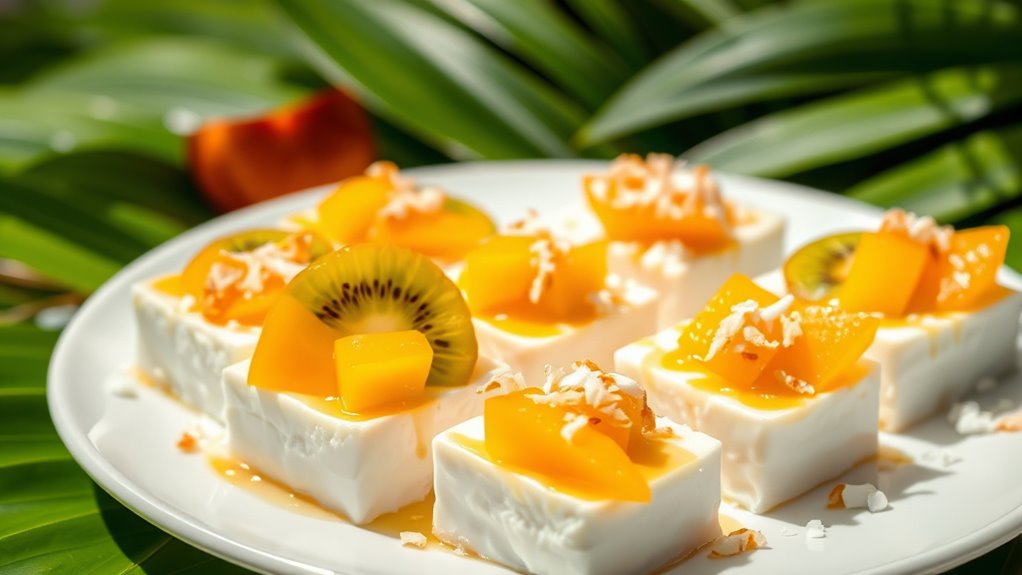
Once your Asian coconut pudding has cooled and set, you’ll want to serve it in a way that highlights its creamy texture and delicate flavor. For presentation ideas, consider slicing the pudding into neat squares or using small molds for an elegant touch. Serving suggestions include topping it with fresh tropical fruits like mango, kiwi, or passionfruit to add vibrant color and a burst of freshness. Drizzling a little toasted coconut or a light syrup made from palm sugar can enhance the natural sweetness. You can also serve it chilled in individual glass cups for a modern, minimalist look. These simple yet thoughtful touches let you enjoy the pudding freely, celebrating its smooth richness while keeping the presentation inviting and visually appealing.
Tips
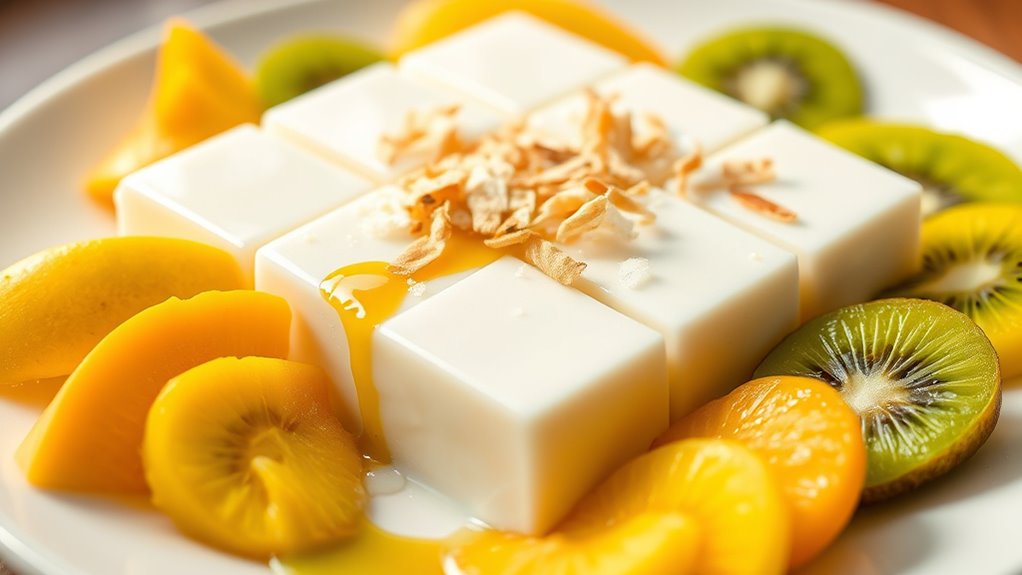
Because Asian coconut pudding relies on simple ingredients, the key to perfecting it lies in attention to detail. When you’re preparing it, use tasting techniques to adjust sweetness and texture—taste as you go, ensuring the coconut’s natural flavor shines without overpowering. Don’t rush the setting time; patience lets the pudding firm up beautifully. For serving suggestions, consider pairing the pudding with fresh tropical fruits like mango or lychee to add brightness and contrast. You can also drizzle a bit of palm sugar syrup or sprinkle toasted sesame seeds for extra depth. Remember, the freedom to customize means you can balance flavors to your liking, making this dessert uniquely yours every time you create it.
Food Value and Benefit
Asian coconut pudding is not only a delicious treat but also a nutritious option that provides several health benefits. Here’s a breakdown of its food value and the benefits of enjoying this recipe:
Food Value:
- Made primarily with coconut milk and agar-agar
- Contains healthy fats, dietary fiber, vitamins, and minerals
Nutritional Benefits:
- Supports brain function and boosts energy: Rich in healthy fats from coconut milk
- Provides essential vitamins and minerals: Includes iron, magnesium, and potassium
- Aids digestion: Agar-agar is a good source of dietary fiber
- Promotes satiety: Fiber content helps you feel full longer
- Balances indulgence and nourishment: A lighter dessert option compared to heavy sweets
This pudding is an excellent choice for those who want to enjoy a sweet treat while maintaining their health and wellness goals.
